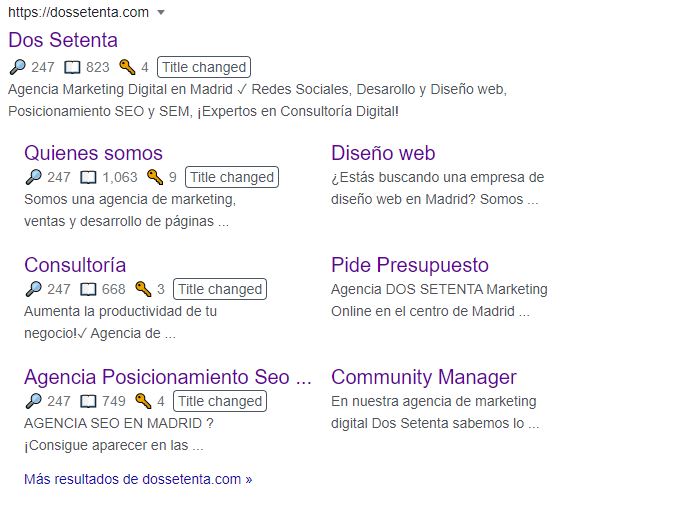Definition of Web Architecture
Web Architecture is the structure and layout that we give to a website so that we can organize its sections to ensure optimal indexing. This also affects the user experience, as a good web architecture allows users to navigate easily through the site without getting lost and finding content quickly. Web architecture consists of pages, categories for both products and blogs, and their tags.
If you are thinking of creating your website or renewing the one you already have, it’s important to take some time to think about what type of web architecture best suits your business. A good approach from the beginning is essential, so it will be easier to rank on Google and get prepared. The type of website for a company that offers a limited number of products (one-page website) will not be the same as for an e-commerce, since the size and design will not be the same.
[poll id=”9″]Advantages of having a well-defined web structure
- Google crawling is more efficient. When Google crawls our website, it has a crawl budget, and by giving it a well-defined and well-organized structure, we make the task much easier. This will allow it to understand our website much faster and reach the URLs we want to rank for quicker. This way, Google won’t miss anything! How does your website crawl? You can find out with a technical SEO audit quickly.
- Better user experience. Not everything is for Google. The most important thing is to think about the user. Our goal is to convert, whatever the type of website we have, so making the user comfortable while navigating through the website is logical. We need to keep in mind that nowadays, people have no patience when navigating, and at the slightest inconvenience, they’ll leave the website for another, whether it’s due to site speed or because they can’t find the content they want quickly. Make it easier for the user, even more than for Google.
- Better indexing. You’ve probably heard of sitelinks and the importance of internal linking. When Google visits our website, it creates a sort of scheme to make things easier when displaying it. If it’s well-structured, it will be shown in the SERPs when someone searches for our brand on Google. The links that appear here are considered by Google to be the most relevant.

Types of Web Architecture
We can easily distinguish between two types of web architecture: horizontal and silo (vertical) architecture.
Horizontal Architecture
This type of structure is usually found in marketplaces, where all types of products are sold, and there is no specialization in any particular one. This structure often makes things more complicated for both the user and Google, as it’s not as easy to find what you’re looking for. In the image, we can see how we link to all categories directly from the homepage.

Silo or Vertical Web Architecture
Silo architecture is the most recommended, as it has all the benefits we’ve previously mentioned. It is well-organized, categorizing and subcategorizing the products or services on our website, leaving a well-defined structure that’s easy to understand. It’s advisable to organize up to a third level so that the user doesn’t need to click more than 3 times to reach what they are looking for. If we achieve this, our internal links will be properly optimized.
In this structure, special care should be taken with the permalinks of our categories to avoid repeating words in our URLs.




